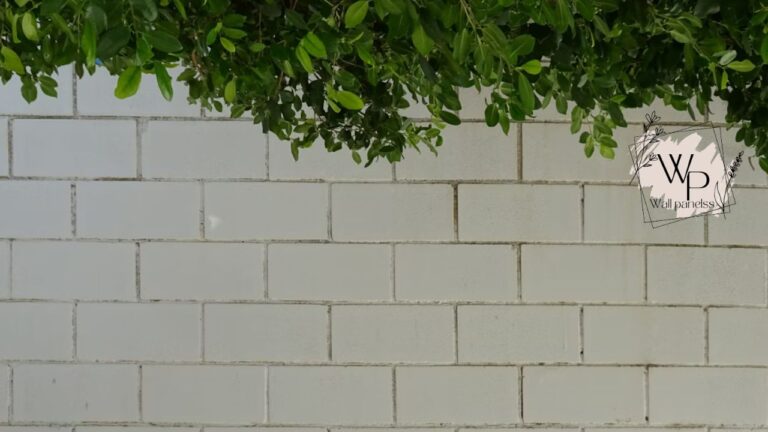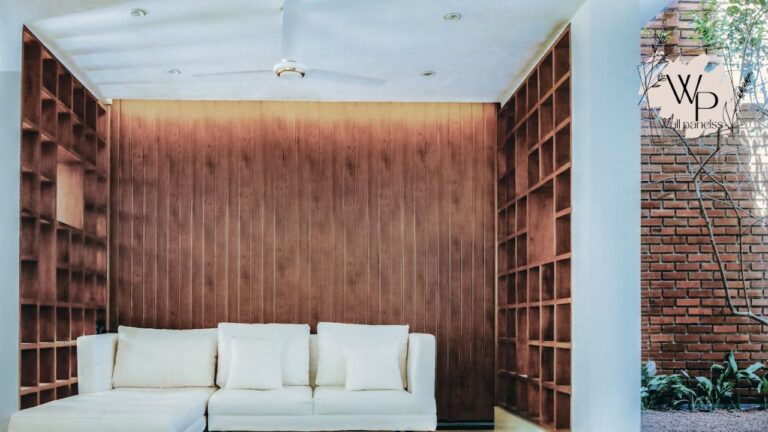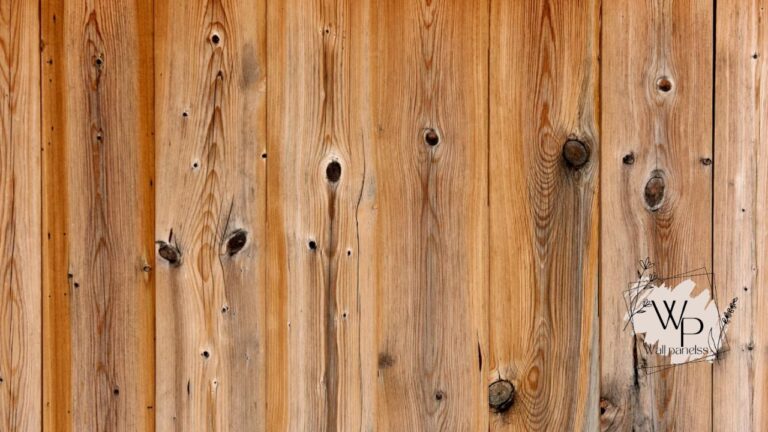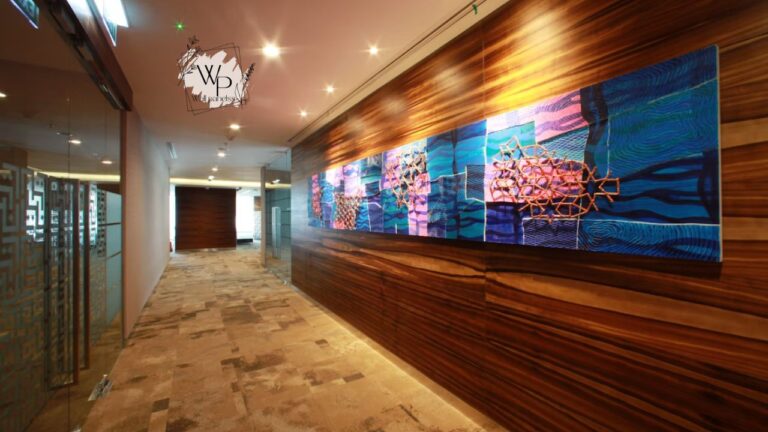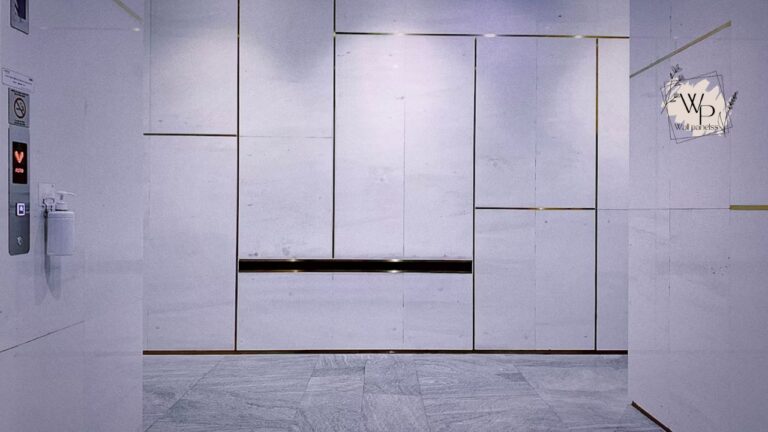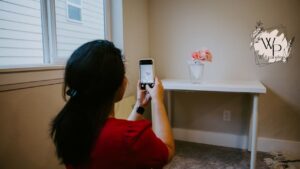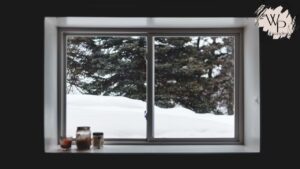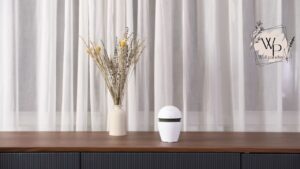Tired of staring at plain, boring walls? You’re not alone. Many homeowners dream of adding character and style to their living spaces, and wall paneling offers a stunningly effective solution. This design element can completely transform a room, taking it from bland to breathtaking with surprising ease.
For decades, wall paneling was associated with stuffy, wood-clad studies from the 70s. But today, it has reemerged as a versatile and sophisticated choice for modern interiors. From sleek, minimalist designs to rustic, textured surfaces, the options are virtually endless. This guide will walk you through everything you need to know to make a brilliant choice for your home.
Wall Paneling at a Glance
| Panel Type | Material | Average Cost (per sq. ft.) | Key Benefit | Ideal For |
|---|---|---|---|---|
| Shiplap | Wood, MDF, PVC | $2.50 – $7 | Rustic, coastal charm | Living rooms, kitchens |
| Board & Batten | Wood, MDF | $7 – $20 | Classic, traditional look | Dining rooms, entryways |
| Beadboard | Wood, MDF, Vinyl | $1 – $4 | Casual, cottage feel | Bathrooms, mudrooms |
| Wainscoting | Wood, MDF, Plastic | $7 – $40 | Formal, elegant style | Dining rooms, hallways |
| Flat Panels | MDF, Plywood | $2 – $10 | Sleek, modern aesthetic | Bedrooms, offices |
| Acoustic Panels | Felt, Foam, Wood | $10 – $50 | Sound absorption | Home theaters, studios |
| 3D Panels | Gypsum, PVC, MDF | $8 – $30 | Dramatic, textured effect | Feature walls, commercial |
| Reclaimed Wood | Salvaged Wood | $10 – $35 | Unique, eco-friendly | Accent walls, lofts |
Diving Deep into the World of Wall Paneling
Wall paneling is essentially a decorative treatment applied to walls. It consists of panels, typically made from wood, MDF, or other materials, arranged in various patterns. Its purpose can be purely aesthetic, wonderfully functional, or a brilliant combination of both.
Historically, this technique was used for insulation and to protect walls from damage. While it still serves those functions, its primary role today is to add architectural interest, texture, and a powerful sense of style to a space. It’s an investment that pays dividends in both beauty and home value.
Why Is Everyone Talking About Wall Paneling?
The resurgence of wall paneling isn’t just a fleeting trend. Homeowners and designers are falling in love with its transformative power for several compelling reasons.
First, it adds depth and dimension. A flat, painted wall can feel one-dimensional, but adding paneling creates shadows and highlights that make a room feel more dynamic and thoughtfully designed. It’s a trick architects have used for centuries to make spaces feel more substantial and luxurious.
Second, it’s incredibly durable. High-traffic areas like hallways, entryways, and kids’ rooms take a beating. Paneling, especially durable wainscoting, can protect the lower portion of the wall from scuffs, dents, and dirt far better than drywall and paint alone. This practical benefit makes it a smart choice for busy households.
Finally, the versatility is simply unmatched. Whether your home’s aesthetic is modern farmhouse, minimalist, or grandly traditional, there’s a type of wall paneling that will complement it perfectly. This adaptability is why it has become such a beloved tool in the interior design world.
Exploring the Most Popular Types of Wall Paneling
With so many options available, choosing the right style can feel overwhelming. Let’s break down the most popular types, their unique characteristics, and where they shine brightest.
Board and Batten: Classic and Enduring
Board and batten is a timeless style characterized by wide vertical boards (the “boards”) joined by thin vertical strips (the “battens”) covering the seams. This creates a clean, geometric pattern that feels both traditional and fresh.
Originally used on the exterior of barns and homes, this style has moved indoors to become a favorite for adding sophisticated character. It’s often painted a crisp white for a classic look but looks equally stunning in bold, dramatic colors.
User Review:
“We installed board and batten in our entryway, and the transformation is unbelievable. It went from a boring corridor to a grand entrance. We get compliments from everyone who walks in! 5/5 Stars.” – Jessica P., Homeowner
Where It Works Best
- Entryways and Hallways: Its durability and classic look make it perfect for creating a strong first impression.
- Dining Rooms: It adds a touch of formality and elegance, making every meal feel a little more special.
- Bedrooms: Used on a feature wall behind the bed, it can create a stunning focal point.
Material and Cost Considerations
Traditional board and batten uses real wood, but modern applications often use MDF for its stability and smooth finish, which is ideal for painting. The cost can vary significantly based on material and labor, but it’s a project that a skilled DIYer can often tackle, making it a budget-friendly option for a high-impact change.
Shiplap: Rustic Charm Meets Modern Style
Shiplap has exploded in popularity, largely thanks to its frequent use in modern farmhouse design. It consists of horizontal boards with a special rabbet joint that allows them to overlap, creating a distinctive thin gap between them.
This style brings a relaxed, rustic, and slightly coastal vibe to any room. While often painted white, shiplap also looks incredible with a natural wood finish or painted in soft, muted tones. It’s a type of wall paneling that feels both cozy and chic.
User Review:
“I was hesitant about the shiplap trend, but I’m a total convert. We put it in our main living area, and it just makes the whole space feel so warm and inviting. The texture is beautiful. 4.5/5 Stars.” – Mark D., Design Enthusiast
Where It Works Best
- Living Rooms: It creates a cozy and welcoming atmosphere, perfect for a family gathering space.
- Kitchens: As a backsplash or on an island, it adds texture and farmhouse flair.
- Bedrooms and Bathrooms: It can make these spaces feel like a serene, rustic retreat.
Common Misconceptions
One common mistake is confusing shiplap with simple nickel-gap planks. True shiplap has the overlapping joint, which helps with alignment and weatherproofing (in exterior applications). The visual effect is similar, but the construction is different.
Wainscoting: Timeless Elegance and Protection
Wainscoting is a broader category of wall paneling that typically covers only the lower portion of a wall, usually between 32 and 48 inches high. It’s often topped with a decorative molding called a chair rail.
This style has its roots in 18th-century design, where it protected walls from chairs and added insulation. Today, it’s used to bring a sense of formality, structure, and classic elegance to a room. There are several types of wainscoting, including raised panel, flat panel, and beadboard.
Raised Panel Wainscoting
This is the most traditional and formal style. It features panels with beveled edges that make them look raised from the surrounding frame. It’s a hallmark of classic, high-end design and is often found in historic homes.
Flat Panel Wainscoting
A more modern and transitional take, flat panel wainscoting (like Shaker or craftsman style) uses simple, flat panels within a frame of stiles and rails. It offers a cleaner, less ornate look that works well in a variety of home styles.
Where It Works Best
- Formal Dining Rooms: Wainscoting adds a level of sophistication that elevates the dining experience.
- Hallways and Staircases: It adds architectural detail and protects the walls in these high-traffic zones.
- Home Offices: It can make an office feel more established and professional.
Beadboard: Charming and Casual
Beadboard is a specific type of paneling characterized by long, continuous vertical grooves and raised “beads” spaced closely together. It evokes a charming, cottage-like feel that is both casual and timeless.
Traditionally sold in individual tongue-and-groove planks, beadboard is now widely available in large, easy-to-install sheets, making it a very DIY-friendly project.
User Review:
“We used beadboard paneling for our bathroom remodel, and it’s perfect! It handles moisture well and gives the room a clean, classic, spa-like feel. It was also surprisingly affordable. 5/5 Stars.” – Sarah K., DIY Remodeler
Where It Works Best
- Bathrooms and Laundry Rooms: Its cottage charm is a perfect fit, and vinyl versions are highly resistant to moisture.
- Kitchens: As a backsplash, it adds texture and a vintage feel.
- Mudrooms and Porches: It’s durable and easy to clean, making it ideal for these hardworking spaces.
3D Wall Panels: A Modern and Dramatic Statement
For those seeking a truly bold and contemporary look, 3D wall paneling is a game-changer. These panels feature sculptural, geometric, or wavy patterns that protrude from the wall, creating an incredible interplay of light and shadow.
Made from materials like gypsum, PVC, MDF, and even plant fibers, 3D panels can turn a plain wall into a work of art. They are most effective when used on a single accent wall to create a dramatic focal point without overwhelming the space.
Design Impact
The effect of 3D panels is nothing short of stunning. They add texture, movement, and a futuristic feel to a room. When lit properly with uplighting or downlighting, the shadows they cast can enhance the pattern and create an even more dynamic visual experience.
Where It Works Best
- Living Room Feature Walls: Behind a TV or sofa, it creates an unforgettable backdrop.
- Bedroom Accent Walls: It can serve as a dramatic, built-in headboard.
- Commercial Spaces: Hotels, restaurants, and retail stores use them to create a high-end, memorable atmosphere.
Reclaimed Wood Paneling: Eco-Friendly and Full of Character
For a look that is truly one-of-a-kind, reclaimed wood wall paneling is an exceptional choice. Sourced from old barns, factories, and other structures, this wood comes with a built-in history. Every knot, nail hole, and color variation tells a story.
This option is not only beautiful but also environmentally friendly, as it gives new life to old materials. The rich patina and texture of reclaimed wood bring an unparalleled warmth and authenticity to a space.
Where It Works Best
- Accent Walls: Its strong character makes it ideal for a focal point in a living room or den.
- Lofts and Industrial Spaces: It complements exposed brick and metal ductwork perfectly.
- Rustic or Cabin-Style Homes: It enhances the natural, earthy aesthetic.
Material Matters: Choosing the Right Stuff for Your Panels
The material you choose for your wall paneling will impact its cost, durability, and final look.
Solid Wood
The original and most authentic choice, solid wood offers natural beauty and durability. It can be stained to highlight the grain or painted. However, it’s the most expensive option and can be susceptible to warping or cracking with changes in humidity.
MDF (Medium-Density Fiberboard)
MDF is an engineered wood product made by breaking down wood residuals into fibers, which are then combined with wax and resin and formed into panels. It is incredibly stable, won’t warp like solid wood, and has a very smooth surface that is perfect for painting. This makes it a popular and cost-effective choice for styles like board and batten and wainscoting.
PVC and Vinyl
For areas with high moisture, like bathrooms or basements, PVC or vinyl wall paneling is an excellent choice. These plastic-based materials are completely waterproof, won’t rot or mold, and are incredibly easy to clean. They are available in many styles, including beadboard and 3D patterns.
Plywood
Plywood can be used for flat paneling to create a modern, minimalist, or Scandinavian look. Higher grades of plywood with attractive veneers (like birch or oak) can be left with a natural finish to showcase the wood grain. It’s a relatively affordable and versatile option.
The Financial Side: Budgeting for Your Wall Paneling Project
The cost of a wall paneling project can range from a few hundred dollars for a small DIY accent wall to many thousands for a professionally installed, room-wide application using premium materials.
Factors That Influence Cost
- Material: Solid wood is the most expensive, while MDF and PVC are more budget-friendly.
- Square Footage: The larger the area you want to cover, the higher the material and labor costs will be.
- Complexity of the Design: A simple flat panel wall will be cheaper than intricate raised-panel wainscoting.
- DIY vs. Professional Installation: Labor is a significant part of the cost. A skilled DIYer can save thousands, but a professional ensures a flawless finish. Professional installation can range from $5 to $15 per square foot, on top of material costs.
Getting a Return on Your Investment
Well-executed wall paneling can be a fantastic investment. According to design experts, architectural details like paneling and molding can significantly increase a home’s perceived value. It makes a home feel more custom, luxurious, and well-built.
A 2022 survey of real estate agents found that homes with desirable features like board and batten or shiplap often sold faster and for a higher price than comparable homes without them. It’s a feature that helps your home stand out in a crowded market.
DIY vs. Hiring a Pro: Making the Right Call
Deciding whether to tackle a wall paneling project yourself or hire a professional depends on your skill level, tools, and the complexity of the job.
When to DIY
- You’re on a Tight Budget: The biggest saving in any DIY project is labor.
- The Project is Simple: Styles like peel-and-stick shiplap or beadboard sheets are designed for easy installation. A simple board and batten accent wall on a flat, straight wall is also a manageable first project.
- You Have the Right Tools: You’ll need at least a miter saw, level, nail gun, and measuring tape.
- You Enjoy the Process: For many, the satisfaction of transforming a space with their own hands is priceless.
When to Hire a Professional
- The Job is Complex: Intricate wainscoting, walls with many windows and outlets, or entire rooms require precise cuts and expert craftsmanship.
- Your Walls Are Uneven: An old house with wavy plaster walls presents challenges that a pro knows how to handle.
- You Value a Perfect Finish: A professional carpenter or finish installer will deliver flawless seams, perfect corners, and a level of polish that can be difficult for an amateur to achieve.
- You Lack the Time: A pro can complete in a day or two what might take a DIYer several weekends.
Finding a good contractor is key. Look for finish carpenters with a portfolio of similar work, check references, and get multiple quotes before making a decision.
Design and Installation Tips for a Flawless Finish
Whether you DIY or hire it out, understanding a few key principles will help ensure your wall paneling project is a stunning success.
Planning is Everything
Before you buy a single board, create a detailed plan.
- Measure Carefully: Measure the height and width of your walls. Double-check everything.
- Create a Layout: Sketch your design on paper or use painter’s tape on the wall to visualize the spacing and proportions of your panels or battens. This is crucial for board and batten to ensure the spacing looks balanced.
- Consider Outlets and Switches: Plan how you will work around electrical outlets, light switches, and vents. You may need to install outlet extenders.
Proportionality is Key
The scale of the paneling should match the scale of the room.
- Ceiling Height: In rooms with high ceilings, you can use taller wainscoting or wider boards. In rooms with lower ceilings, stick to more delicate proportions to avoid making the room feel smaller.
- Rule of Thirds: A common design guideline for wainscoting is to have it cover the bottom third of the wall. For example, in a room with a 9-foot (108-inch) ceiling, a height of around 36 inches often looks best.
Finishing Touches
The final steps are what elevate a good project to a great one.
- Caulk and Wood Filler: Use paintable caulk to fill all the seams where the paneling meets the wall, ceiling, and other pieces. Use wood filler for all nail holes. This step is tedious but absolutely essential for a professional, seamless look.
- Prime and Paint: Always prime your wall paneling, especially if it’s MDF or raw wood. This seals the material and ensures an even paint finish. Apply at least two coats of high-quality paint for a durable and beautiful result. A satin or semi-gloss finish is often recommended for paneling as it’s more durable and easier to clean than a flat finish.
Frequently Asked Questions (FAQs)
1. Does wall paneling make a room look smaller?
Not necessarily. It’s all about proportion and color. Light-colored paneling, especially with vertical lines like board and batten or beadboard, can actually make a room feel taller and more spacious. Dark, heavy paneling in a small room can make it feel more closed-in.
2. Can I install wall paneling in a bathroom?
Absolutely! But it’s critical to choose the right material. Use PVC or vinyl paneling, which are 100% waterproof. If you use MDF or wood, it must be thoroughly sealed with oil-based primer and high-quality, moisture-resistant paint to prevent damage from humidity.
3. Is wall paneling outdated?
Far from it! While the dark, faux-wood sheets of the 1970s are definitely dated, modern wall paneling styles like shiplap, board and batten, and 3D panels are extremely popular in contemporary interior design. The key is choosing a style that complements your home’s architecture and decor.
4. How do I clean wall paneling?
For most painted paneling, a soft cloth dampened with mild soap and water is sufficient. Avoid abrasive cleaners that could damage the paint finish. For natural wood paneling, use a cleaner specifically designed for wood. Regular dusting will keep it looking fresh.
5. Is wall paneling a good choice for increasing home value?
Yes, it can be. Well-designed and professionally installed wall paneling is considered an upgrade that adds architectural character. It can make a home more appealing to buyers and can contribute to a higher perceived value, similar to features like crown molding or built-in shelving.
6. What’s the easiest type of wall paneling to install for a beginner?
Peel-and-stick panels (available in shiplap, 3D, and other styles) are the absolute easiest. After that, large sheets of beadboard paneling are quite manageable for a DIYer with basic tools. A simple board and batten design on a single, uncomplicated accent wall is also a great starting project.
Admin Recommendation
WallPanel Home Assistant Idle: The Ultimate Guide to Smart Home Displays


